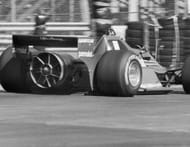Formula One began as a single seater racing competition, hoping to showcase innovation and engineer cars in a manner that they displayed speed and finesse. While the focus normally remains on the driver as the ‘man’ is the one that brings the ‘machine’ home, it is the car that enables the racer to do so.
The engineers that develop these cars in the background are responsible for delivering mind-numbing speed. They are also required to design the car in a manner which is likeable for the masses.
‘Formula’ in Formula One stands for the set of rules which all the participants must adhere to. In recent times, these set of rules have become more stringent, not allowing for innovation quite as much as was possible in yesteryears. Some of the previously developed cars did not tend to stick to an orthodox template, they were always experimenting with each new model.
Developers have been quick to find loopholes in these rules and give way to concepts which, even if they sounded or looked funny, were mostly effective. A recent example would be Ferrari mounting mirrors on the halo, which the Fédération Internationale de l'Automobile (FIA) later banned.
While some cars are iconic for their liveries, like the papaya orange or even more recently, the Force India pink, some are famous for their quirky designs. Let’s have a look at a few of these oddly designed cars developed for Formula One racing-
#1 1979 Ensign N179
Designed by Dave Baldwin, the 1979 Ensign N179 was used by team Ensign. Up until then, the side-pods of a car were used to stow radiators, but Baldwin decided to transfers the radiators to the nose of the car, in what turned out to look like a ladder-style design. This was done to increase the downforce by reserving the side-pods for wing-shaped tunnels.
The radiators were used to keep the car cool, but the design grabbed eyeballs for all the wrong reasons. The concept was binned when it proved to be a failure on track and Baldwin was replaced by Nigel Bennett and Ralph Bellamy.The N180 succeeded it for the 1980 season.
#2 1981 Williams FW07D

Williams and Ferrari experimented with the idea of using a six-wheeled car instead of the traditional four-wheeler by adding an additional set of wheels in the hind of the car. The car had two non-driven front wheels and four driven rear wheels.
Alan Jones tested the FW07D in 1981 at the Donington Park Circuit. However, the design never made it to a race, despite being used as a concept to model the FW08B. It might have been interesting to watch the car in action, but FIA was quick to ban cars lacking or exceeding a total of four wheels in Formula One.
#3 1978 Brabham BT46B Fan Car

Bernie Ecclestone is mostly known as the former chief executive of the Formula One Group, but it was also under his ownership that Brabham released the BT46 for the 1978 Formula One season. Designed by Gordon Murray, the car was used to experiment with various different structural concepts.
The BT46B was developed as a counter to the Lotus 79, and it installed a fan to suck the air from beneath the car, giving it more grip and downforce. Niki Lauda drove the car during the Swedish Grand Prix and won it by over half a minute. It was claimed that the fan was used only for cooling purposes, and while the car was deemed legal by FIA, it was never used again.
#4 2004 Williams FW26

Patrick Head, Gavin Fisher, and Antonia Terzi collectively designed the FW26 for the 2004 Formula One season. In order to come up with a dominating package, the car included a ‘walrus’ nose or a tusk nose. The nosecone was small and chunky and was attached to the front wing in order to increase the airflow to the underside of the car, so as to improve the aerodynamic efficiency.
During pre-season testing, the car showed speed, but once the season rolled around, it was found lacking. Williams were expected to fight for the championship that year but with the FW26, the chances of that happening quickly dwindled. The car turned out to be unreliable and was difficult to set up, and it paved way for the FW27.
#5 1971 March 711

The March 711, designed by Frank Costin, was the first car Niki Lauda ever used in a Formula One race. While the single-seater was not mostly odd, its front wing was so flat that it warranted the nickname, ‘flying tea tray’ or ‘Spitfire’, based on the Spitfire fighter planes. It was designed in that manner to induce more downforce.
The car helped Ronnie Peterson finish in the second position for the driver’s championship of 1971, assisting him to five podiums, despite not winning a single race that season. However, the tray-shaped front wing mounted on top of the nose was quickly discarded.
Bonus- The Caterham CT05

The 2014 Formula Season saw Caterham introduce the CT05, driven by Marcus Ericsson and Kamui Kobayashi. The most notable aspect of the car was the distinctive nose design. The car did not bring success to either of the drivers, but it was the last car ever designed by Caterham before they went out of business in 2015.